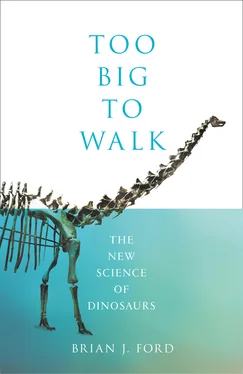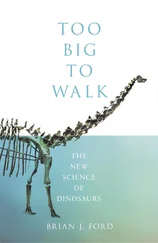1 ...7 8 9 11 12 13 ...29 Venetz worked further on the theory, and became convinced that – just as the hunter Perraudin had concluded – there had been eras in the past where glaciers had existed, and they had left indelible marks on the present-day landscape. He claimed that this proved that much of Europe had previously been covered with vast glaciers. At last it was becoming acceptable to say that the world’s climate truly had changed over time.38
Interest in this subject soon came to the attention of a physician and amateur geologist, Jean Louis Rodolphe Agassiz. He was born in 1807 in Môtier, in the French-speaking part of Switzerland, and qualified in Munich, Germany. He was soon to develop an interest in palæontology and he later studied in Paris under Georges Cuvier, who was greatly impressed by Agassiz’s growing knowledge of fossil fish. When Cuvier died, Agassiz saw himself as his natural successor, and later wrote an extensive work on fossil fish.39
As he developed his spare-time interests in natural history, Agassiz used to discuss his ideas with Karl Friedrich Schimper, a botanist turned poet and four years his senior. Schimper was a firm believer in the idea that prehistoric glaciation had created the landscape they saw around them, and he persuaded Agassiz that the views of Martel and, more recently, Perraudin, provided the evidence. Louis Agassiz devoted much of his free time to tracing changes in the Alps, monitoring snowfall and recording temperatures, and eventually he published an extensive monograph on glaciation. The title page of his book bears a vivid engraving of a glacier towering high above forest trees, and much of the contents comprises a comprehensive collection of detailed climatological tables.40
Agassiz owed his inspiration to Schimper, and to those who preceded him. Scholars have drawn attention to the way in which Agassiz not only failed to give them due credit, but sought actively to conceal it. In 1846, confident that his international reputation was assured, and that his mentors had been eclipsed, Agassiz emigrated to the U.S. and spent the rest of his life as a professor at Harvard.41
Since the revelations in the Alps that Pierre Martel documented more than 270 years ago, we have come to accept the occurrence of ice ages.
We have not always reached the right conclusions. Just 40 years ago, instead of the warmer world we are currently experiencing, people were heralding a new ice age by the end of the last millennium. Global cooling, not warming, was the threat that the public were warned about. Two of my friends wrote books prophesying an era of intense cold. In 1976 John Gribbin published Forecasts, Famines and Freezing and Nigel Calder wrote The Weather Machine and the Threat of Ice . Both confidently assured their readers that we were about to plunge into a new ice age and told how in the temperate latitudes we would need to retreat below the surface to create insulated, habitable cities in order to survive an icy future.42
Calder’s book followed a mammoth BBC television documentary in which he warned us that an ice age was imminent. However, a survey of all the scientific publications on climate in the 1970s shows that only 10 per cent upheld the idea of a new ice age. Even then, most academic opinion was beginning to point to the era we are now experiencing – a time of rising temperatures.43 Most papers were typified by one in Science in 1975, in which Wally Broecker coined the term ‘global warming’.44
This prediction can be traced back to the Swedish scientist Svante Arrhenius, who discovered the relationship between carbon dioxide in the air and the temperature of the atmosphere as long ago as 1896.45 Arrhenius followed this in 1908 with a book in which he suggested that we should expect a gradual warming of our world. He calculated that a doubling of the CO2 in the atmosphere would raise Earth’s average temperature by about 10°F (5–6°C) – an estimate still used by many researchers today.46
Between 1938 and 1957 a British engineer named Guy Callendar published a series of 26 papers that set out to relate the atmospheric increase in CO2 to rising temperatures. Then in 1953 Canadian physicist Gilbert Plass reviewed Callendar’s results and calculated that, if the concentration of atmospheric CO2 were to double, the global temperature would rise by about 7°F (3–4°C). This was a meticulous and important paper, but it was ignored by scientists. Plass was a professor at Texas A&M University when writing his paper and, because his university was regarded as undistinguished, his crucial conclusions were ignored. Academic snobbery drowned his prescient proposal.47
For those who want to see more of the way in which those pioneering investigations of climate change have matured into today’s concerns, the most authoritative book on the subject is the splendid volume Experimenting on a Small Planet by William Hay, Professor Emeritus at the University of Colorado in Boulder.48 The first edition appeared in 2013 and runs to some 1,000 pages. It tells a curious story and is excellent bedtime reading, although, as we know, no book on the future of our climate is destined to have a happy ending.

Emerging from the Shadows
Philosophers took a long time to accept that the world had once been a different place. The next step up our ladder of understanding was the dawning realization that huge monsters had once lived on our Earth – creatures whose remains we could find, yet whose nature we could not yet discern. It was the insight of a young French naturalist that introduced the revolutionary idea that there had once been gigantic life forms that had long since ceased to exist. This great step was the brainchild of Jean Léopold Nicolas Frédéric Cuvier. Cuvier – known ever since as Georges – became the greatest naturalist of his age in France, and arguably in Europe. He was born in 1769 in the ancient town of Montbéliard, nestling close to the border with Switzerland, which at the time was ruled by Germany. His father, Jean Georges Cuvier, served in the Swiss Guards, and his mother, Anne Clémence Chatel, was devoted to him and spent much time teaching him. By the time he went to school he showed a fearsome eidetic memory and could recite in detail the chronology of kings and queens, princes and emperors. An enduring fascination for unravelling the past drove his lifetime of study. As a boy, working with his mother, the young Cuvier pored over the antiquated works on natural history by the great French naturalist Georges-Louis Leclerc, Comte de Buffon, and also those by Conrad von Geßner, the influential Swiss zoologist. As a result, by the age of 10 Cuvier was fully conversant with zoology and the classification of all the main animal types.1
Throughout his twenties, Cuvier became increasingly interested in fossils. In 1796 – aged just 27 – he was elected a member of the Academy of Sciences in Paris and presented his first paper on the comparisons between Asiatic and African elephants, and the fossilized remains of mammoths. He listed the differences between African and Asiatic elephants and clearly showed that they were distinct species. Cuvier carefully concluded that the fossils must represent creatures that were extinct. Some of the fossils he studied were of the animal still known as the ‘Ohio Animal’ – the monstrous bones were first excavated in the U.S. in 1739 and were always thought to be the remains of elephants. Cuvier demonstrated that they were anatomically distinct, and he subsequently proposed the name ‘mastodon’. Later that year he spoke of a huge skeleton that had been excavated in Paraguay. He compared its skull with the appearance of present-day sloths, and concluded that this was another kind of gigantic ground-dwelling sloth. He decided to name it Megatherium . These were two crucial papers – first, they demonstrated the value of comparative anatomy, and they also established the view that there were huge forms of life which no longer existed. The young Cuvier ensured that the idea of extinct giants was formally established, and his two lectures set the science of palæontology onto a firm footing.
Читать дальше













